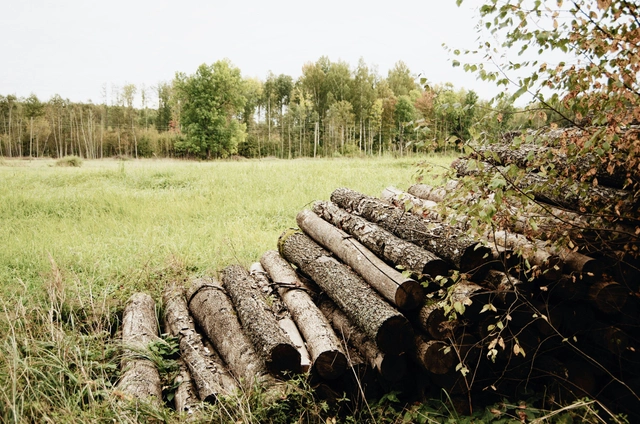1. What is Deforestation?
Deforestation is the process of clearing forests, typically to make way for agricultural activities, urbanization, or logging. It results in the permanent destruction of forests and loss of biodiversity.
- Types of Deforestation: Deforestation can be categorized as clear-cutting, selective logging, or slash-and-burn practices, each having unique impacts on ecosystems.
- Global Context: Regions like the Amazon rainforest, Southeast Asia, and Central Africa are hotspots for deforestation due to agricultural expansion and logging.
2. Causes of Deforestation
Deforestation occurs due to various human activities and natural factors, with significant contributions from industrial and agricultural expansion.
- Agriculture: The need for farmland, particularly for crops like soy and palm oil, is a leading cause of deforestation.
- Urbanization: Expanding cities and infrastructure development lead to forest clearing, especially in developing countries.
- Logging: The demand for timber and paper products drives extensive logging, contributing significantly to deforestation.
- Natural Causes: Forest loss can also occur due to natural disasters like wildfires, droughts, and hurricanes.
3. Impacts of Deforestation
The effects of deforestation are widespread, influencing climate, biodiversity, and human societies.
- Climate Change: Deforestation releases carbon dioxide stored in trees, exacerbating global warming and reducing carbon sequestration capabilities.
- Loss of Biodiversity: Habitat destruction leads to the extinction of species and disrupts ecosystems.
- Soil Erosion: Removing trees exposes soil to erosion, reducing its fertility and increasing the risk of landslides.
- Impact on Indigenous Communities: Deforestation often displaces indigenous people, disrupting their way of life and cultural heritage.
4. Solutions to Deforestation
Addressing deforestation requires global collaboration and the implementation of sustainable practices.
- Reforestation: Planting trees to restore degraded land can help recover lost ecosystems and combat climate change.
- Sustainable Agriculture: Promoting sustainable farming practices reduces the need to clear forests for agricultural purposes.
- Protected Areas: Creating and enforcing laws to protect forests from exploitation ensures their preservation.
- Consumer Awareness: Encouraging the purchase of sustainably sourced products helps reduce the demand for goods linked to deforestation.
5. The Role of Technology
Modern technology plays a crucial role in monitoring and combating deforestation.
- Satellite Monitoring: Satellites provide real-time data on forest cover changes, helping to detect illegal logging activities.
- Drones: Drones are used for reforestation efforts and detailed forest monitoring.
- Artificial Intelligence: AI tools analyze deforestation trends and predict areas at risk, aiding in prevention strategies.
Summary
- Deforestation is the clearing of forests for purposes like agriculture, logging, and urbanization.
- It contributes significantly to climate change, biodiversity loss, and soil erosion.
- Solutions include reforestation, sustainable practices, protected areas, and consumer awareness.
- Technology like satellites, drones, and AI plays a crucial role in monitoring and combating deforestation.
References
- - Deforestation Explained (National Geographic)
- - Drivers of Deforestation (World Resources Institute)
- - Environmental Impacts of Deforestation (World Wildlife Fund)
- - Deforestation Solutions (United Nations Environment Programme)
- - Technology in Forest Conservation (Global Forest Watch)
- - Forest and Climate Change (Intergovernmental Panel on Climate Change)
keywords: deforestation; forest loss; environmental impact; climate change.
Partner Suggestion
Top 10 Life-Changing Books to Read

